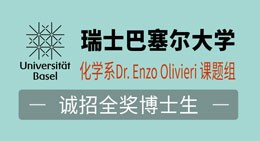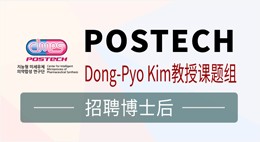Our official English website, www.x-mol.net, welcomes your
feedback! (Note: you will need to create a separate account there.)
Impact of 9‐(4‐methoxyphenyl) Carbazole and Benzodithiophene Cores on Performance and Stability for Perovskite Solar Cells Based on Dopant‐Free Hole‐Transporting Materials
Solar RRL ( IF 6.0 ) Pub Date : 2019-07-15 , DOI: 10.1002/solr.201900202
Jianfeng Qiu 1, 2 , Hongli Liu 1, 2 , Xianggao Li 1, 2 , Shirong Wang 1, 2 , Fei Zhang 1, 2
Solar RRL ( IF 6.0 ) Pub Date : 2019-07-15 , DOI: 10.1002/solr.201900202
Jianfeng Qiu 1, 2 , Hongli Liu 1, 2 , Xianggao Li 1, 2 , Shirong Wang 1, 2 , Fei Zhang 1, 2
Affiliation

|
Perovskite solar cells (PSCs) possess both high‐power conversion efficiency (PCE) and good operation stability for future application. Although many different types of hole‐transporting materials (HTMs) are assessed, few dopant‐free small organic molecule HTMs‐based PSC cells exist, which exhibit excellent stability under both heat and illumination. Herein, two novel HTMs that are based on 9‐(4‐methoxyphenyl) carbazole and benzodithiophene cores are synthesized and named N1,N1′‐(9‐(4‐methoxyphenyl)‐9H‐carbazole‐3,6‐diyl)bis(N1‐(4‐(bis(4‐methoxyphenyl)amino)phenyl)‐N4,N4‐bis(4‐methoxyphenyl)benzene‐1,4‐diamine) (PhCz‐4MeOTPA) and N1,N1′‐(benzo[1,2‐b:4,5‐b′]dithiophene‐2,6‐diyl)bis(N1‐(4‐(bis(4‐methoxyphenyl)amino)phenyl)‐N4,N4‐bis(4‐methixyphenyl)benzene‐1,4‐diamine) (BDT‐4MeOTPA). Of the two HTMs, PhCz‐4MeOTPA possesses a lower level of planarity than that of BDT‐4MeOTPA, which inhibits molecular stacking to improve film quality and increases hole‐transport mobility and charge transport. A PCE of 16.04% is achieved with the application of dopant‐free PhCz‐4MeOTPA in PSCs, which is higher than that of dopant‐free BDT‐4MeOTPA. The unencapsulated PSC devices based on PhCz‐4MeOTPA maintain 82% of their initial values under continuous sun illumination in an ambient environment at 40–45 °C after 672 h and 92% of their initial values at 80 °C in an ambient environment after 1200 h in the dark.
中文翻译:

基于无掺杂空穴传输材料的9-(4-甲氧基苯基)咔唑和苯并二噻吩核对钙钛矿太阳能电池性能和稳定性的影响
钙钛矿太阳能电池(PSC)具有高功率转换效率(PCE)和良好的操作稳定性,以备将来使用。尽管评估了许多不同类型的空穴传输材料(HTM),但几乎没有基于掺杂剂的小有机分子HTMs PSC电池,它们在热和光照下均具有出色的稳定性。本文合成了两个基于9-(4-甲氧基苯基)咔唑和苯并二噻吩核心的新型HTM,并将其命名为N 1,N 1'-(9-(4-甲氧基苯基)-9 H-咔唑-3,6-二基)bis(N 1–(4-(双(4-(甲氧基苯基)氨基)苯基)‐N 4,N 4-双(4-甲氧基苯基)苯-1,4-二胺)(PhCz‐4MeOTPA)和N 1,ñ1'-(苯并[1,2-b:4,5-b']二噻吩-2,6-二基)双(N 1-(4-(双(4-(4-甲氧基苯基)氨基)苯基)-N 4,N 4-双(4-甲基苯基)苯-1,4-二胺)(BDT-4MeOTPA)。在这两种HTM中,PhCz-4MeOTPA的平面度比BDT-4MeOTPA的低,这抑制了分子堆叠以改善膜质量并增加了空穴传输的迁移率和电荷传输。在PSC中使用无掺杂剂的PhCz-4MeOTPA可以实现16.04%的PCE,高于无掺杂剂的BDT-4MeOTPA。基于PhCz-4MeOTPA的未封装PSC器件在672 h后在40-45°C的环境中连续日照下保持82%的初始值,在1200h之后在80°C的环境中仍保持92%的初始值。 h在黑暗中。
更新日期:2019-07-15
中文翻译:

基于无掺杂空穴传输材料的9-(4-甲氧基苯基)咔唑和苯并二噻吩核对钙钛矿太阳能电池性能和稳定性的影响
钙钛矿太阳能电池(PSC)具有高功率转换效率(PCE)和良好的操作稳定性,以备将来使用。尽管评估了许多不同类型的空穴传输材料(HTM),但几乎没有基于掺杂剂的小有机分子HTMs PSC电池,它们在热和光照下均具有出色的稳定性。本文合成了两个基于9-(4-甲氧基苯基)咔唑和苯并二噻吩核心的新型HTM,并将其命名为N 1,N 1'-(9-(4-甲氧基苯基)-9 H-咔唑-3,6-二基)bis(N 1–(4-(双(4-(甲氧基苯基)氨基)苯基)‐N 4,N 4-双(4-甲氧基苯基)苯-1,4-二胺)(PhCz‐4MeOTPA)和N 1,ñ1'-(苯并[1,2-b:4,5-b']二噻吩-2,6-二基)双(N 1-(4-(双(4-(4-甲氧基苯基)氨基)苯基)-N 4,N 4-双(4-甲基苯基)苯-1,4-二胺)(BDT-4MeOTPA)。在这两种HTM中,PhCz-4MeOTPA的平面度比BDT-4MeOTPA的低,这抑制了分子堆叠以改善膜质量并增加了空穴传输的迁移率和电荷传输。在PSC中使用无掺杂剂的PhCz-4MeOTPA可以实现16.04%的PCE,高于无掺杂剂的BDT-4MeOTPA。基于PhCz-4MeOTPA的未封装PSC器件在672 h后在40-45°C的环境中连续日照下保持82%的初始值,在1200h之后在80°C的环境中仍保持92%的初始值。 h在黑暗中。

































 京公网安备 11010802027423号
京公网安备 11010802027423号